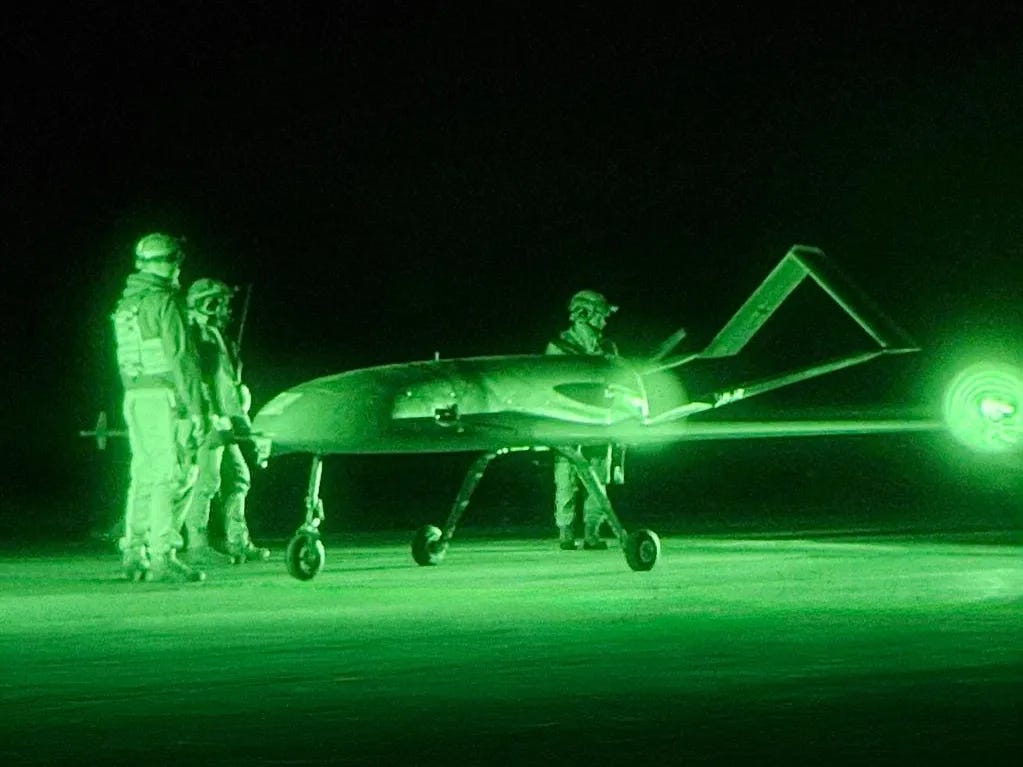Russia Has 10 Gunpowder Factories. Ukraine's Drones Just Blew Up One Of Them.
Tambov Gunpowder Plant went up in flames.
The 14th UAS Regiment, Ukraine’s elite strike drone unit, has blown up one of Russia’s gunpowder factories: the Tambov Gunpowder Plant in Kotovsk, 230 miles from the front line in Ukraine.
It’s not the first drone strike on Tambov. Ukrainian drones previously struck the plant in November 2023. That the Ukrainians persist in attacking the powder factory speaks to its importance. Gunpowder production is a critical bottleneck in the supply of munitions on both sides of Russia’s 40-month wider war on Ukraine.
But don’t get too excited. The Tambov plant is just one of 10 major Russian powder plants. And its 2,500 employees account for just 10% of the overall powder workforce.
It’s unclear which drones the 14th UAS Regiment flung at Tambov on Tuesday, but it’s possible they were 1,000-mile-range UAC FP-1s, which are quickly becoming Ukraine’s main deep-strike asset.
“A hit on the target followed by a fire has been confirmed,” the Ukrainian Unmanned Systems Forces reported. “The final results of [the] deep strike are being clarified. During the attack, the enemy implemented the ‘Kovor’ plan”—whatever that is—“and restricted airport operations in Kaluga and Saratov.”
If Tambov survived one drone strike, it may survive another. And if Ukraine hopes to seriously throttle Russian powder production, it’ll need to strike more widely.
The good news for Ukrainian strike planners is that the set of targets isn’t really changing. In ramping up powder production to meet growing demand driven by the war in Ukraine, Russia has simply added workers at existing—and aging—plants.
“A 17% workforce expansion across major explosives and gunpowder plants since 2021, with up to 57% increases at some key sites, underpins the rise in production,” Pavel Luzin wrote for The Jamestown Foundation in Washington, D.C. “Further gains are constrained by outdated infrastructure.”
Rare cotton
A shell, weighing anywhere from a few tens of pounds to a couple of hundred pounds, depending on the caliber, is just one of the components of a complete artillery system. TNT-tipped shells need propellant.
That is, gunpowder. Every 20-pound powder bag a gunner stuffs under the shell in their howitzer barrel adds force to the firing—and sends a shell flying an additional several miles. An army could have all the shells in the world. But without powder, it couldn’t fire them.
That’s why Ukraine and Russia are both working to secure supply chains for the critical components of the explosive powder. Among those components: high-quality cotton—“guncotton,” it’s called—that only a few countries grow in large quantities.
“There is no significant domestic cotton cultivation in Russia, and most cotton lint, cotton pulp and cotton cellulose nitrate have recently been imported from Uzbekistan, India, Malaysia and Turkey,” Luzin wrote.
“Gunpowder production in Russia nearly doubled from 2022 to 2024 due to increased imports and domestic manufacturing of cotton cellulose nitrate,” Luzin added. “This rise suggests a potential doubling in artillery shell output during the same period.”
Reliance of guncotton imports only increased. “Domestic sourcing challenges hinder self-sufficiency in critical components of gunpowder,” Luzin explained.
“Modernization of Russia’s military-industrial complex is underway, but not yet transformative, with Russia focusing on sustaining output rather than achieving exponential growth,” Luzin added. “Future increases in manufacturing will likely face rising costs and logistical challenges.”
All that is to say, Ukraine can’t strike at Russia’s supply of guncotton, because the cotton isn’t grown in Russia. It can strike at the factories that process that cotton into powder, however.
There are 10 factories. Just one of them burned on Tuesday.
Read more:
Ukraine's Best New Attack Drones Flew 600 Miles to Blow Up a Critical Defense Plant in Western Russia
On or just before Monday, Ukrainian drones motored more than 600 miles to blow up a factory in Cheboksary in western Russia.






